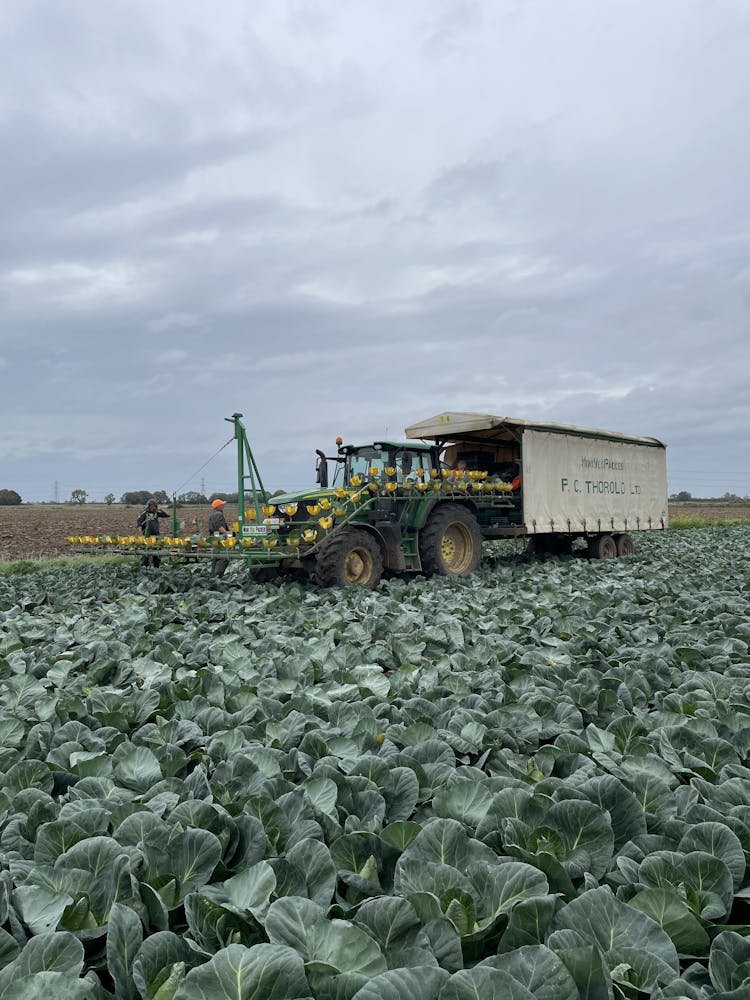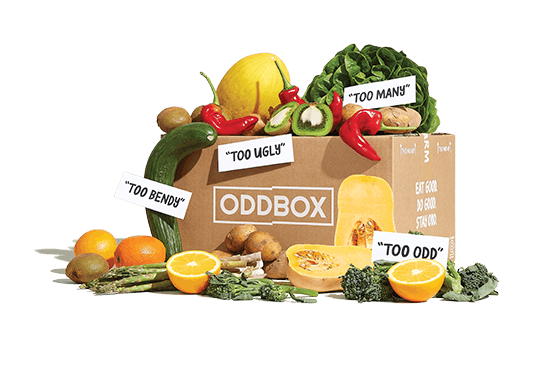Behind the Box: Brassicas
As part of our Behind the Box series, we spent the day with our wonderful brassica growers at PC Thorold’s in South Lincolnshire.
Peter, Ben, Shelley, Jake and the team grow cabbages, broccoli, Brussels sprouts, cauliflowers and spring greens across over 3,000 acres, plus four acres of greenhouses.Here are some of our take-aways from the day (along with pockets full of Brussels):

1. Size matters
Unlike other crops, brassicas don’t tend to be “too odd” for their intended market. Instead, it all comes down to size, with our main reasons for rescue being because crops are “too big” or “too small”. And – believe it or not – each supermarket has different specs for what’s “just right”.
For one supermarket, it’s all about selling supersized broccoli so customers get more for their money. Another one likes slightly dinkier heads, perfect for a single meal. While for the wholesale market, bigger is always better.
PC Thorold’s have even invented their own machine for sorting broccoli into different sizes. But the reality is, crops don’t always grow as predicted. Which is why they can be left with “too many” of a certain size and not enough of others – a logistical nightmare when you have orders to fulfil.
2. The weather can make – and break – a whole season
Broccoli likes wind around its leaves. Cauliflower stops growing if it’s cold. And a few nights of minus two degrees can destroy an entire field of cabbages.
Brassicas might seem hardy – and they are, compared to many other crops. But growers are still at the mercy of the weather, which means they can never predict how things are going to grow or how many ‘in-spec’ crops they’ll be left with. Even a full moon can affect things, with more light at night meaning speedier growth and a field of crops that are suddenly “too big” to sell.
It’s just one of the reasons we need to speak to growers each week – when it comes to farming, things can change quickly. And they frequently do.
3. Brassicas grow all year round
PC Thorold’s are unusual in that they plant their own seeds under glass – many growers will buy small plants from other places, ready for the fields.
Although it’s not cheap buying seeds or keeping little plants well-watered, it means they can act quickly to move crops outside under plastic if there’s a good spell of weather in the spring.
Each variety of brassica has a different growing time, so the team staggers things to make sure they always have the people and machinery to pick what’s ready. (For more on what happens when things get ‘out of sync’, have a read of our blog post with PC Thorold’s from a few years ago.)
4. The leafy bits get left behind
Although it might seem like a waste, a lot of the leaves from brassica plants get ploughed back into the soil – or even fed to local sheep. We were surprised to see the amount of the plant that doesn’t get eaten, but our growers assured us the soil needs nutrients, so the leaves are important too.
There’s one exception to that, though. Our growers told us that, decades ago, people used to eat ‘sprout tops’ – the bushy bits from the top of Brussels sprout stalks. If you remember eating them (or if you’d like to see them in boxes!) we’d love to hear from you. It could be the next big thing…
5. It’s a team effort
“By the time a single Brussels sprout reaches your plate, it will have been planted, picked, graded, trimmed, graded again and then packed – that’s at least five different teams.”
That’s what the pack house manager told us as we watched veg being packed up into crates – and it makes food waste an even more worrying prospect.
We’ve been rescuing brassicas from PC Thorold’s for over 6 years now, and while we’d love to say they don’t need us anymore, the reality is that far too many perfectly good crops are still without a home each week. That’s a lot of water, energy and time at risk of being wasted too.
From cauliflowers that grew “too big” at lightning speed to undersized sprouts that no one wants for Christmas, we’ve seen it all. And we’ll keep offering a space in our boxes to out-of-spec brassicas for as long as necessary, so that every floret ends up on a fork. The way it should be.

